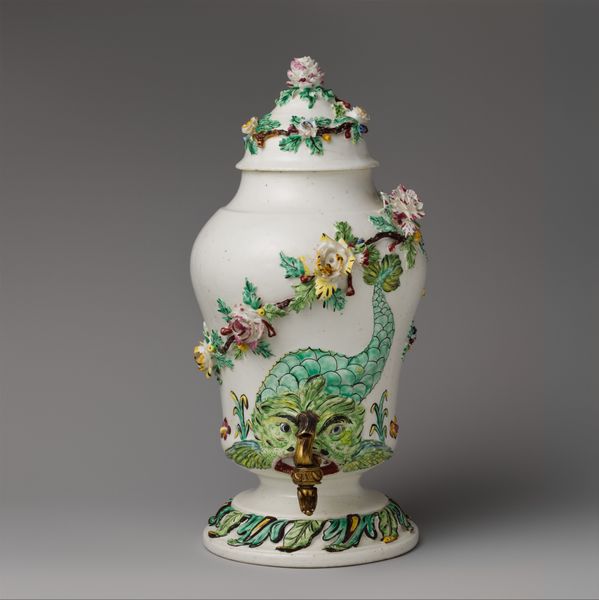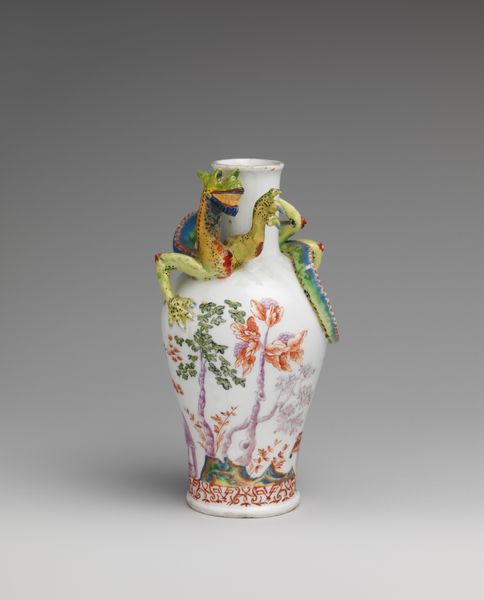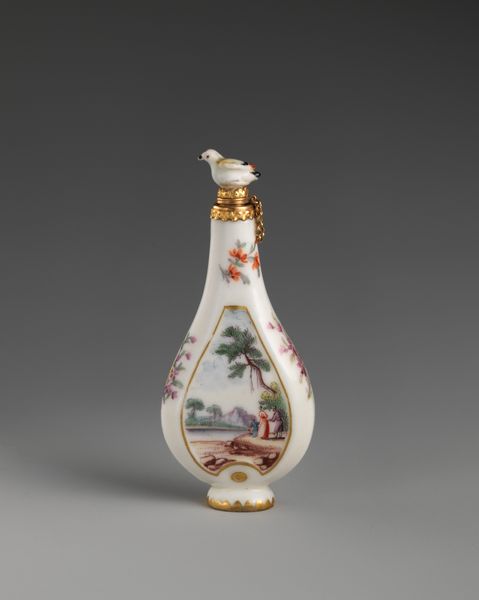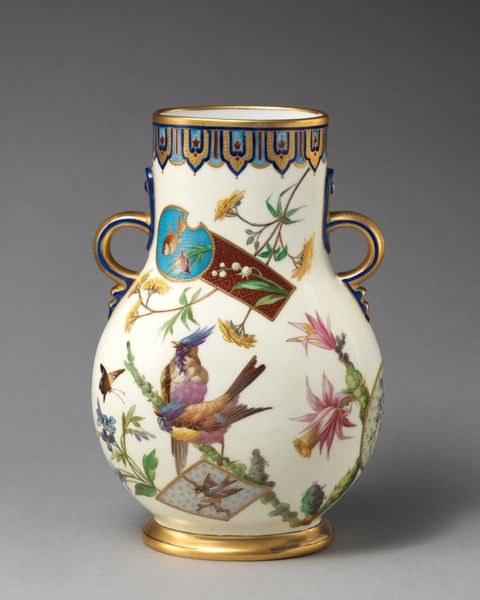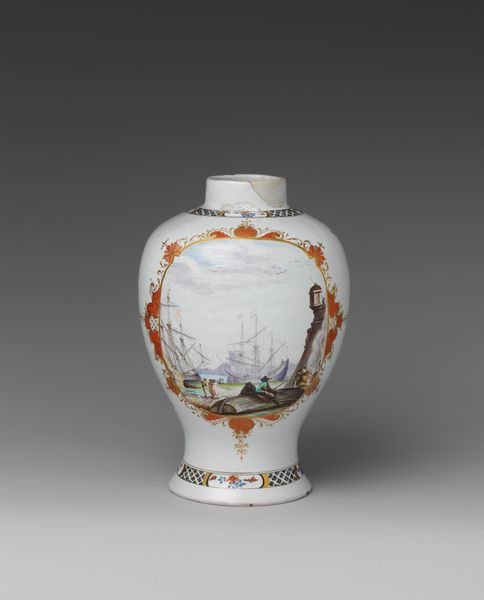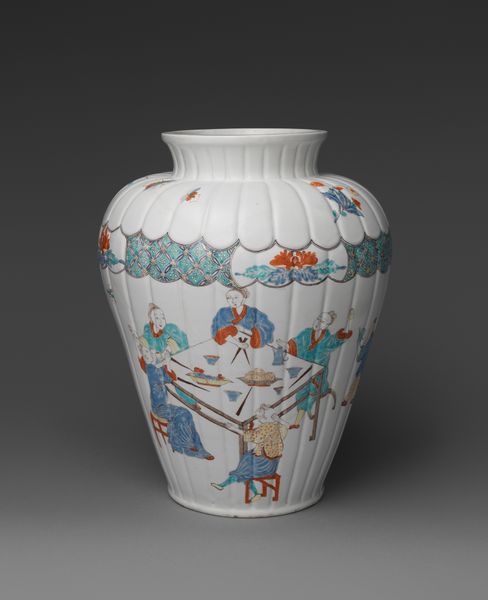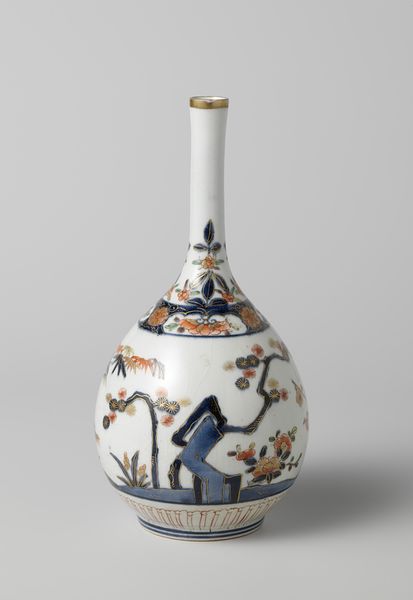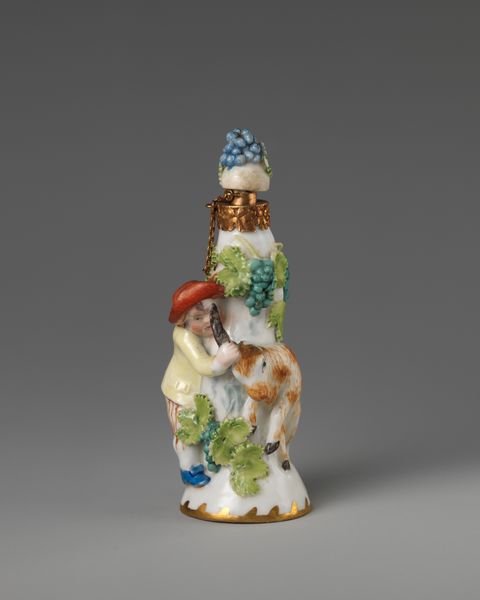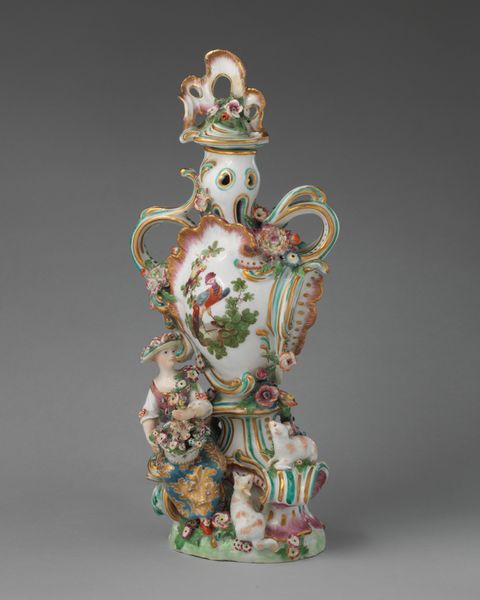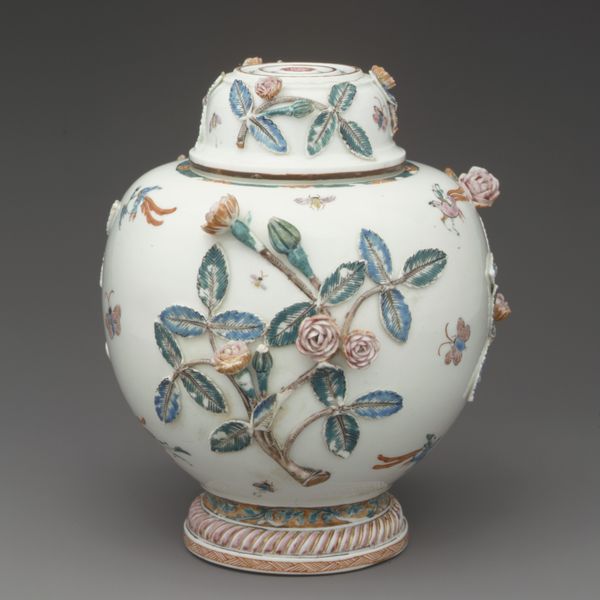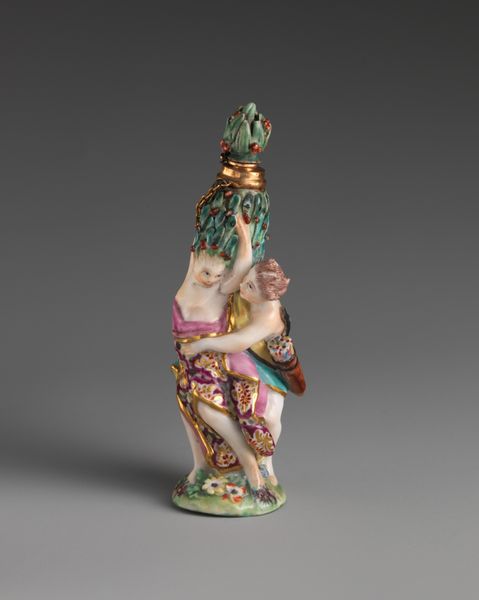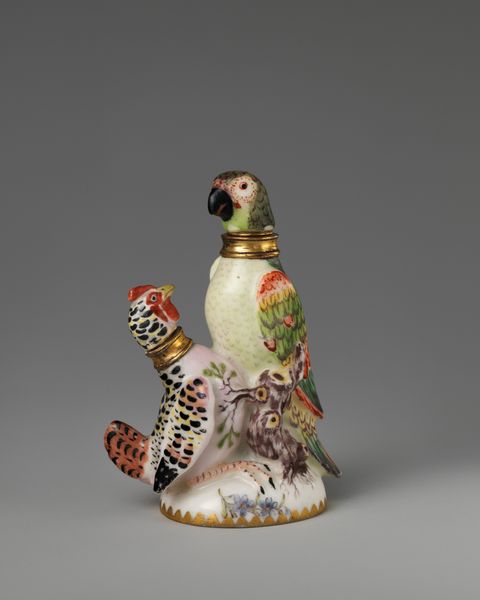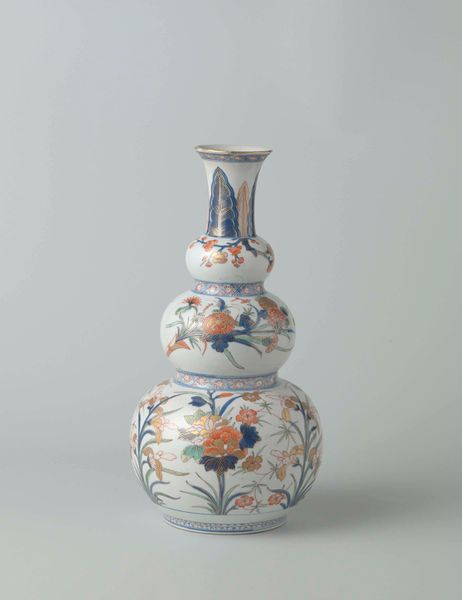
Dimensions: Overall (confirmed): 9 1/2 × 6 5/8 × 4 3/4 in. (24.1 × 16.8 × 12.1 cm)
Copyright: Public Domain
Curator: Let’s turn our attention to this Coffeepot, made by the Höchst Manufactory sometime between 1768 and 1775. You’ll find it in the Metropolitan Museum of Art's collection. The Rococo piece, crafted from porcelain, offers a glimpse into a very particular time and place. Editor: It's charming. A first impression—I’m struck by the almost aggressively idyllic scene. That park and those pastel outfits... what stories are built into such careful images? Curator: Absolutely. Genre painting was blossoming at the time. Looking closer, consider what the presentation of leisurely park life meant for the elites who used such items, given the backdrop of profound economic inequality and revolutionary foment. These motifs allowed the owners to further embody a class fantasy. Editor: Indeed, a potent visual language emerges when juxtaposing such idealized images against social reality. Those garden landscapes, echoed even on the lid, seem designed to project notions of ease and elegance. The color palettes suggest the artifice in Rococo—fostering fantasies of freedom for a powerful minority. Curator: Precisely! And note the porcelain itself: A European mimicry of prized Asian imports—revealing intricate dynamics of trade, labor exploitation, and cultural appropriation, central to the European decorative arts during this period. The narrative unfolds on a material object intimately connected to privilege. Editor: So this delicate Coffeepot—its very form evokes certain ritualized gestures. We see a story of deliberate cultural construction in Rococo, embedding meaning both through the painted scene and the object itself. An elite-produced reflection of power and grace, but whose? For whom? Curator: Yes, by interrogating the artwork's socio-political framework, its intended audience and function, we can challenge a reading of it as merely aesthetically pleasing. We're not simply admiring craft but unearthing embedded narratives. Editor: Agreed. It's in deciphering that visual language, both the obvious symbols of aristocracy and the implicit signals around trade and power, that we start to unveil those stories layered into this elaborate, delicate piece. A fascinating object indeed!
Comments
No comments
Be the first to comment and join the conversation on the ultimate creative platform.
